Last Chance to Catch NYC's Holiday Notalgia Train
We met the voices of the NYC subway on our nostalgia ride this weekend!


Last week, descendants of the historic downtown neighborhood known as Little Syria, as well as writers, historians, artists, and preservationists, witnessed a significant step forward in recognizing the area’s history. Bringing together two green spaces, the New York City Department of Parks and Recreation is building a new 20,000 square foot park, including public artwork, to commemorate influential writers and poets associated with the historic area known as Little Syria. The park location will be at the convergence of Trinity Place, Greenwich Street, the tiny Edgar Street, and the Brooklyn Battery Tunnel Exit, and will bear the name, Elizabeth H. Berger Plaza, after the late Downtown Alliance President, Liz Berger.
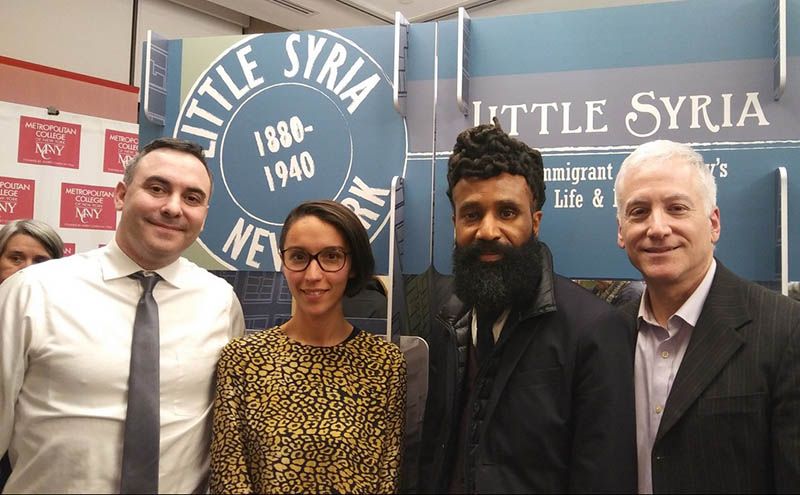
From L-R, Todd Fine, President of The Washington Street Historical Society; Sara Ouhaddou, Selected Artist for Elizabeth Berger Plaza; Kendal Henry, Director of ‘Percent for Art’ (Department of Cultural Affairs); and George Vellonakis, Landscape Architect at Department of Parks and Recreation. Image courtesy of NYC Mayor’s Office
A day-long public meeting was held by the Department of Cultural Affairs of New York City, through its Percent for Art program. The purpose of the meeting was to choose the winning proposal for the public art monument commemorating the Little Syria neighborhood and its literary heritage. Proposals were submitted by four well-known artists, and at the end of the day, the winning artist was the France and Morocco-based artist and designer, Sara Ouhaddou who will create a work inspired by Arabic calligraphy using asphalt and stone.
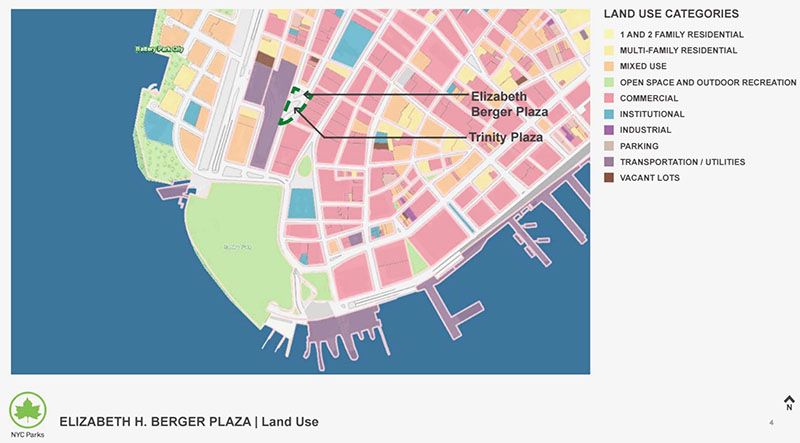
Image indicating where the Elizabeth H. Berger Plaza will be located

Elizabeth H. Berger Plaza Design Concept. Image via NYC Parks Department
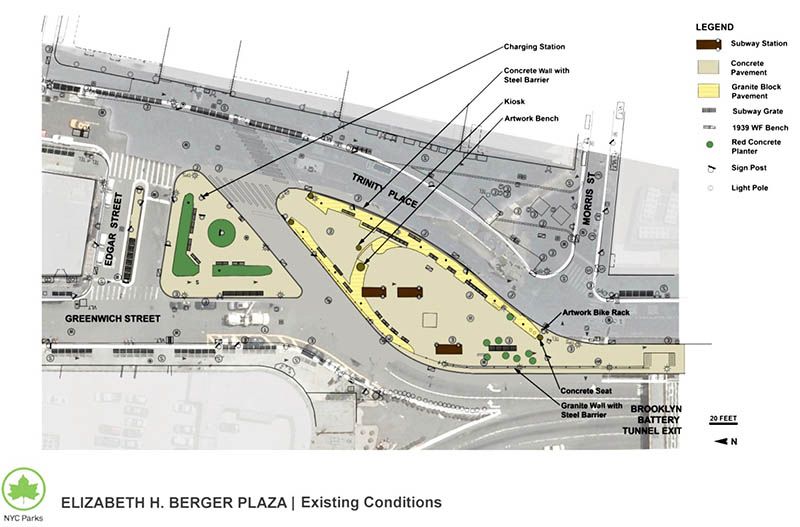

Concurrently, the recent New York City Department of Records exhibit, Little Syria: An Immigrant Community’s Life and Legacy, brought to life the vibrancy of what was once a thriving literary community. This exhibit, now on view at Metropolitan College of New York, is an excellent back-drop for the highly anticipated parks project and monument in telling the story of this thriving community that existed from the 1880s to the 1940s, when Robert Moses constructed the Brooklyn Battery Tunnel, decimating Little Syria and its cultural community.
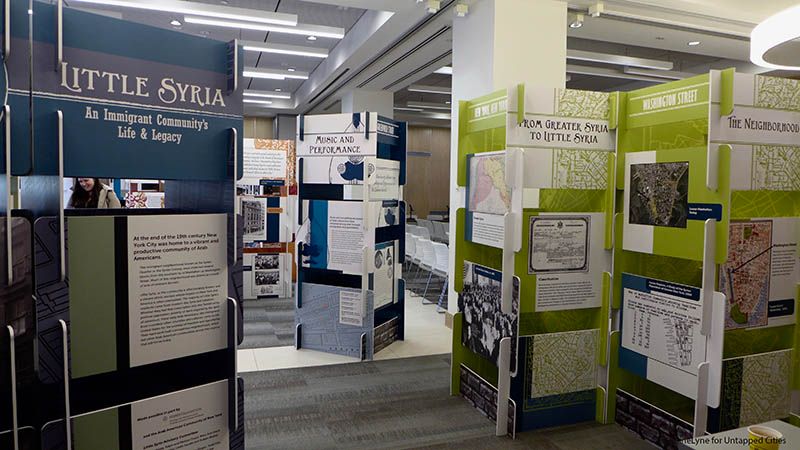
Their story begins in the 1880s, when a large number of immigrants from what is now Lebanon and Syria arrived in the United States. The mostly Christian Syrian/Lebanese immigrants settled in the Lower West Side, in an area anchored on Washington Street. Here they created a thriving cultural and economic neighborhood known as Little Syria. Since many of these immigrants were educated and multilingual, it quickly became the home to a large number of writers, poets, newspaper editors, essayists, and novelists of Arab descent. It is where the “Pen League” was formed, with such renowned members as Kahil Gibran, Mikha’il Na’ima, Elia Abu Madi, Afifa Karam, and Ameen Rihani. And it is where the Linotype typesetting machine was adopted for Arabic characters. Their writings were far-reaching throughout the world, since they now enjoyed freedom in their collective form of expression.
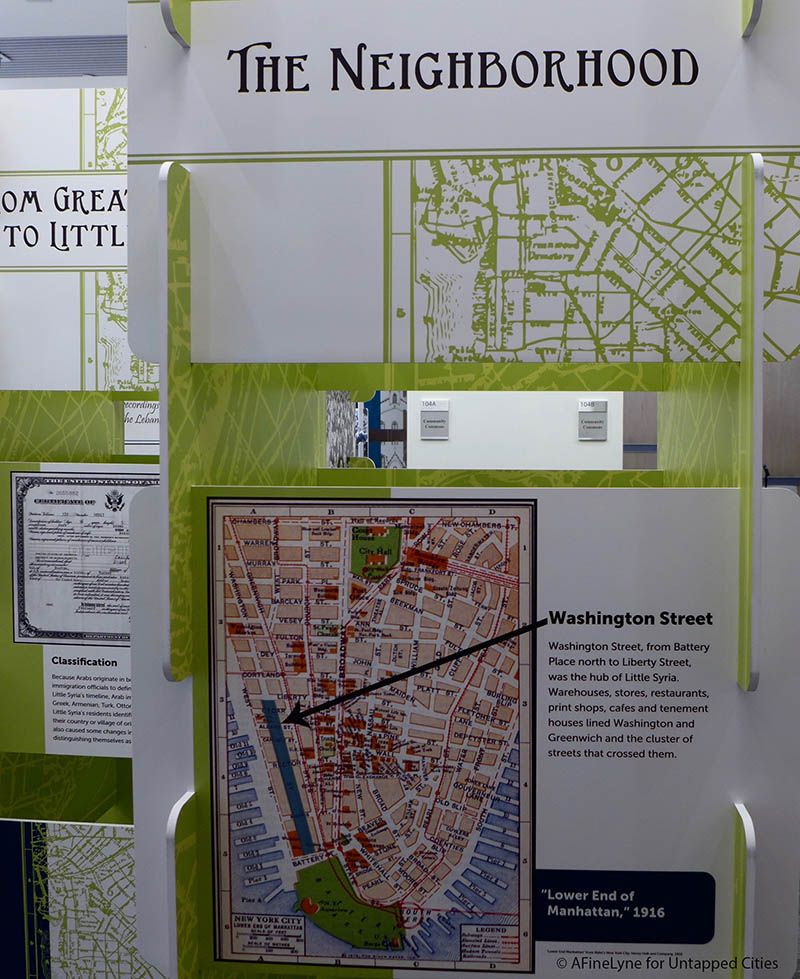
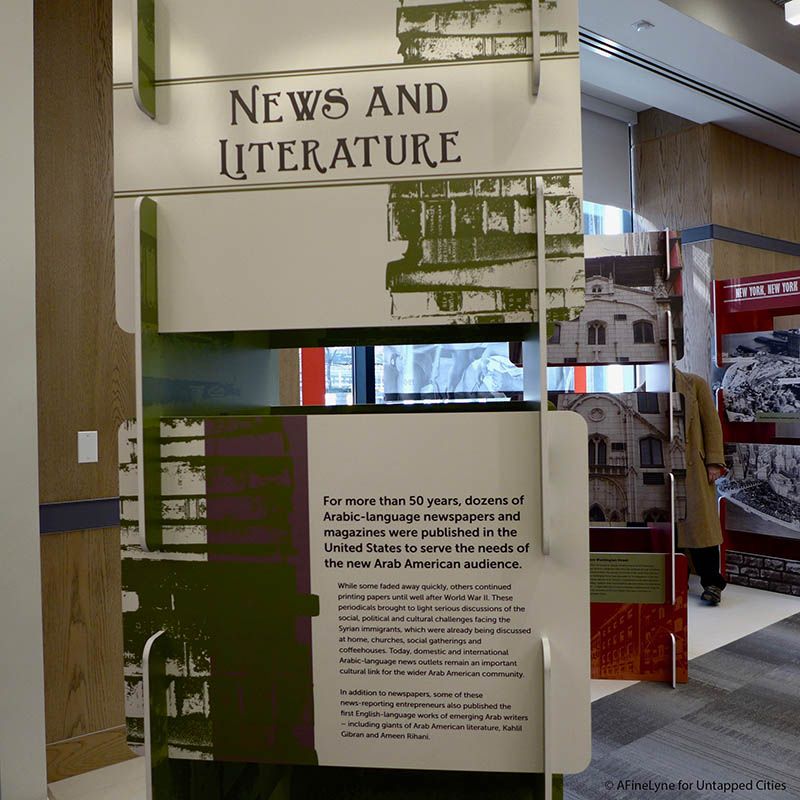

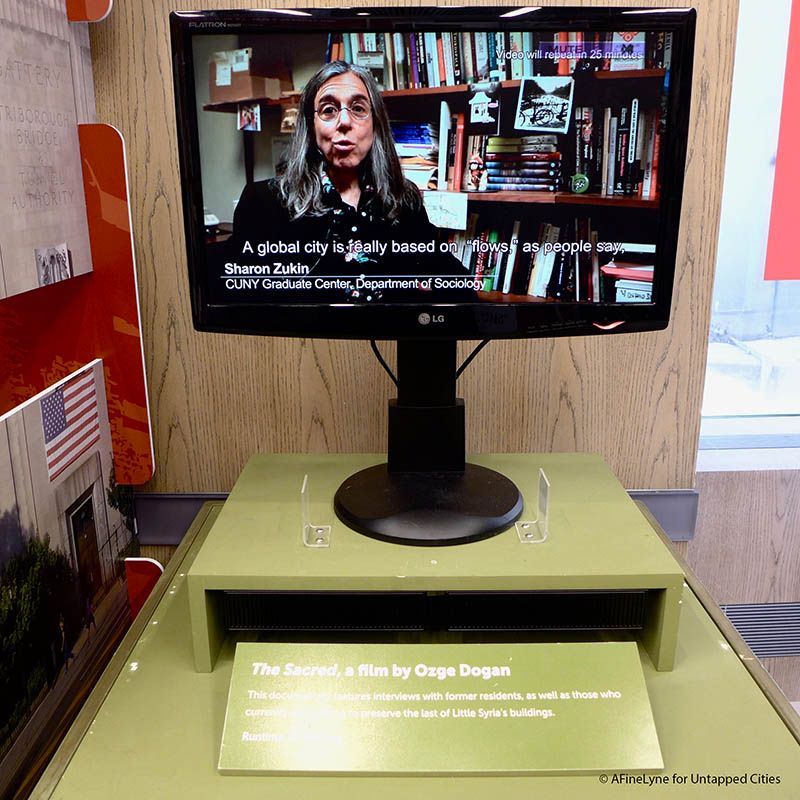
‘The Sacred,’ a documentary film by Ozge Dogan
Descendants of the residents of Little Syria can still be found in this neighborhood today, although only three original buildings have survived. Todd Fine, President of the Washington Street Historical Society, leads tours of the location where the three remaining structures of Little Syria still stand.

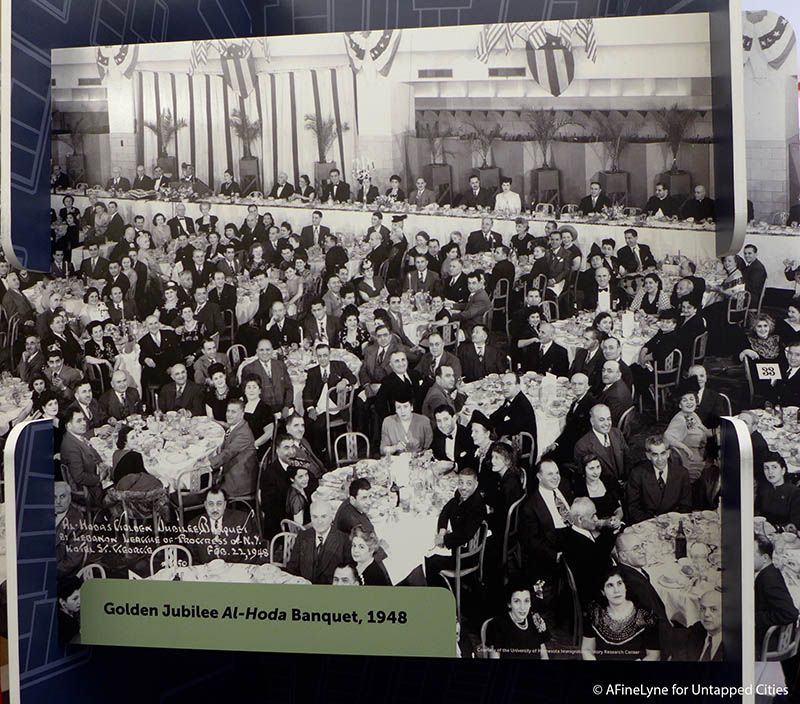
Al-Hoda was the leading newspaper in Little Syria

Elizabeth H. Berger Plaza will not only honor the Little Syria historic community, but will also provide a pedestrian link from the 911 Memorial to Battery Park. It has an anticipated completion date of 2019.
The exhibit, Little Syria: An Immigrant Community’s Life and Legacy, is located at Metropolitan College of New York, 60 West Street, and will be on view through March 24, 2016, along with related programming.

In this interactive exhibit, questions are asked – What makes your neighborhood special? What foods or smells remind you of home?
While downtown, take a Tour of the Remnants of Dutch New Amsterdam, or take a Public Walking Tour in Lower Manhattan. Learn more about The Battery and explore 12 Outdoor Art Installation on the Battery City Park. Esplanade. Learn how Public Art gets Commissioned. You can contact the author at AFineLyne.
Subscribe to our newsletter